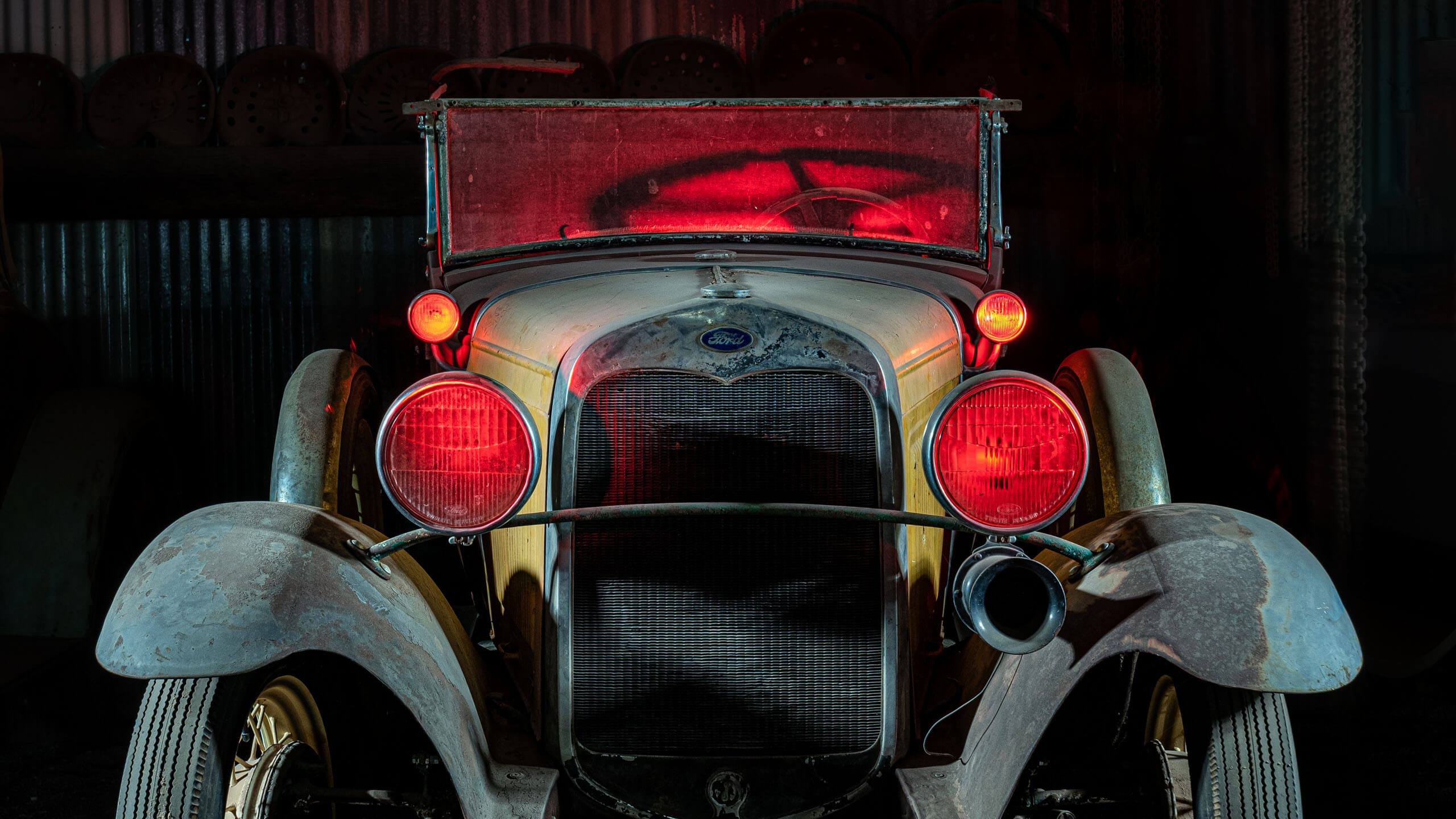I love vintage automobiles. And I love mystery and weirdness. Here’s how I went about light painting a vintage Model A in total darkness.
What is light painting?
Light painting is a term that is often used loosely to describe any addition of light to a night photograph. Really, though, light painting is a technique that uses a handheld light source to illuminate a scene during a long exposure. You are quite literally painting the scene with light. Night photographers have used this technique for many decades.
Here’s how I illuminated a vintage Ford Model A, an automobile built a century ago.
CRAAAAAAASH!!!!
The Model A was housed indoors. Usually, I am outdoors photographing beneath the starry skies or the moon.
Not this evening, though. On the first evening of my night photography trip, I was talking to someone for a moment. I left my Nikon D750 and Rokinon 12mm f/2.8 fisheye lens standing on a tripod. When I returned, I couldn’t find it for a couple of seconds.
An insanely strong and sudden gust of wind knocked it over and carried it several feet from where I had left it. The lens was smashed, with the lens hood peeling off. The lens cap was hurled 30 feet to the east. It would have gone farther had it not been for a building stopping its path.
So, photographing indoors it was with my surviving Pentax K-1 and 15-30mm f/2.8 lens.
A good way to photograph in complete darkness indoors
Of course, indoors is in almost complete darkness. Sure, I could turn on the fluorescent lights above, but where’ the fun in that? This is night photography!
However, I might want to see my way around.
I used my handy Wurkkos FC11 LED flashlight and laid it on the ground pointing away from the Model A. This would illuminate just enough for me to see where I was going, but not enough to really illuminate it.
Four steps to light painting the vintage Model A
Step one: Lighting the left side and front of the vehicle
From camera left, I held the ProtoMachines LED2 light low to the ground and swept it back and forth three times. This lit the ground to give it some texture and also lit the automobile’s front grille.
Step two: Lighting the right side and front of the vehicle
From camera right, I did the same thing on the right side. This would create a sense of symmetry as well as give it some texture and lighting.
Step three: Lighting the headlights
I screwed my homemade DIY snoot onto the ProtoMachines LED2. This would direct the light in a much smaller, more specific area. This is perfect for things such as headlights. A quick burst of red light on each of the headlights, and I was finished.
Step four: Lighting the windshield
Removing the snoot, I then held my light beneath the steering wheel. Why? Who doesn’t love a steering wheel shadow on the windshield?
After that, I closed the camera shutter. The long exposure was three seconds shy of two minutes (117 seconds at f/8 ISO 200). When you are photographing in total darkness, it doesn’t matter whether you are doing a three-second exposure or a three-minute exposure. Your light painting is doing all the illuminating. The darkness is going to be dark with any reasonable exposure when using a low ISO anyway.
You are the director
When you light paint during night photography, you are making creative decisions. You decide what to illuminate and what to keep in shadow. You decide what angle, what sort of texture, what sort of feel, and what sort of colors you want in your photo. It is the most actively creative form of photography that I know. You are wandering around in the scene, determining the angles, colors and brightness. Every “brushstroke of light” builds the photo.
If you do this, you are one of a very small amount of photographers who try. Far less stick with it. Hopefully, articles like this inspire you to keep doing it. I cannot possibly exaggerate how addicting, fun, and rewarding it is.
Source link




Leave a Reply